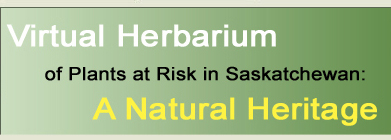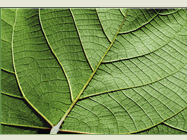|
| Juncus nevadensis
S. Wats. |
|
| |
| TAXONOMY |
| |
| Family: |
Juncaceae |
| Genus: |
Juncus |
| |
| Species Synonyms: |
none |
| Common Names: |
Nevada rush
Sierra rush |
| |
| DISTRIBUTION |
| |
| Canada: |
British Columbia – Alberta – southwestern
Saskatchewan |
| Saskatchewan: |
southwestern Saskatchewan; Battleford –
Cypress Hills |
| Ecoregion: |
Cypress Upland, Mixed Grassland, Moist Mixed Grassland,
Aspen Parkland |
| |
| HABITAT |
| |
| Saskatchewan: |
prairie sloughs, grassy shores,
meadow slopes, and grassy aspen woods |
| Associated species: |
large St. Johnswort |
| |
| RARITY STATUS |
| |
Provincial
Status According
to Harms (2003): |
Threatened |
| Nature Conservancy
Status: |
G5 S1 |
Saskatchewan
Species at
Risk Status: |
None |
| COSEWIC Status:
|
None |
| |
| Nevada rush is threatened
in Saskatchewan because it is rare or uncommon and is limited to the southwestern
part of the province. Local population sizes vary and possible threats have
been identified. |
| |
| SPECIES
DESCRIPTION |
| |
| Height: |
5 - 70 cm |
| Roots: |
rhizome not swollen, slender |
| Stems: |
perennial, erect, round, smooth |
| Leaves: |
basal leaves 1 – 3; stem leaves 1 –
2, blade divided by cross partitions, green, laterally flattened or round;
ear-like lobes at the base of the stem conspicuous, 1 – 3 mm, tip
rounded to acute, membranous |
| Inflorescence: |
terminal, branched, of 5 - 30 heads, 2 –
12 cm long, branches erect to spreading; heads 3 – 11-flowered, nearly
round; primary bract erect |
| Flowers: |
small bracts below the flowers absent; tepals
approximately the same length, inner tepals may be slightly shorter than
the outer, lance-shaped, tip acute to sharp-pointed, dark brown to white;
stamens 6, anthers 1 – 2 times filament length |
| Fruits: |
capsules 2.5 – 2.5 mm long, included to
slightly shorter than the tepals, ellipsoid, apex acute, valves spreading
at maturity; seeds ellipsoid, not tailed |
| |
| JUNCUS
KEY FOR SPECIES FOUND IN SASKATCHEWAN |
| |
| 1 Inflorescence appearing lateral;
leaves all basal |
2 |
| 1 Inflorescence appearing terminal;
may have at least one blade-bearing leaf on the lower stem or all leaves
basal |
3 |
| |
|
2 Bract stout, much shorter than stem;
perianth parts usually darker brown; anthers commonly much longer than their
filaments
|
J. balticus |
| 2 Bract slender, as long as or longer
than stem; perianth parts greenish to light brown; anthers commonly shorter
than or equal to their filaments |
J. filiformis |
| |
|
| 3 Leaves divided by cross-partitions,
rounded, or if flattened, bases overlapping and blades appearing oriented
with the edge towards the stem |
4 |
| 3 Leaves not divided by cross-partitions,
rounded or if flattened, not appearing oriented with the edge towards the
stem |
12 |
| |
|
| 4 Leaves strongly flattened and bases
overlapping and blades appearing oriented with the edge towards the stem |
5 |
| 4 Leaves rounded or slightly flattened |
7 |
| |
|
| 5 Styles surpassing petals; seeds
with a distinct tail-like appendage |
J. tracyi |
| 5 Styles equal to petals; seeds without
a tail |
6 |
| |
|
| 6 Stamens 3; ear-like lobes at the
base of the leaf lacking |
J. ensifolius |
| 6 Stamens 6; ear-like lobes at the
base of the leaf present |
J. saximontanus |
| |
|
| 7 Flowers in dense spherical heads |
8 |
| 7 Flowers few to many in narrower
heads |
10 |
| |
|
| 8 Heads solitary; rhizomes densely
matted |
J. mertensianus |
| 8 Heads solitary; rhizomes elongate
and creeping, often bearing swellings |
9 |
| |
|
| 9 Tepals reddish-brown, inner tepals
longer than or equal to outer tepals; leaves 1 – 2 mm thick; sheaths
with yellowish ear-like lobes |
J. nodosus var. nodosus |
| 9 Tepals greenish to dull brown, inner
tepals shorter than outer tepals; leaves to 5 mm thick; sheaths with membranous
ear-like lobes |
J. torreyi |
| |
|
| 10 Seeds about 1 mm long, with definite
white tail-like appendages |
J. brevicaudatus |
| 10 Seeds less than 0.5 mm long, sharply
pointed but without white tails |
11 |
| |
|
| 11 Anthers shorter than or equalling
their filaments; perianth segments obtuse; capsule exceeding the perianth |
J. alpinoarticulatus ssp. nodulosus |
| 11 Anthers distinctly longer than
their filaments; perianth segments acute; capsule shorter than or equal
to the perianth |
J. nevadensis |
| |
|
| 12 Each flower inserted singly on
the branches of the inflorescences and subtended by a pair of small bractlets
in addition to the bractlet at the base of the flower stalk |
13 |
| 12 Each flower subtended only by the
single bractlet at the base of the very short stalk |
19 |
| |
|
| 13 Roots fibrous; dwarf species, branched
near base; annuals; leaf sheaths without ear-like lobes |
J. bufonius |
| 13 Rhizomes elongate or short if stem
densely tufted; plants not dwarfed or branched near the base; perennials;
leaf sheaths with ear-like lobes or prolonged |
14 |
| |
|
| 14 Leaf sheaths extending to about
halfway up the stem |
J. compressus |
| 14 Leaf sheaths confined to base or
only extending to about one third of the way up the stem |
15 |
| |
|
| 15 Sepals erect, closely appressed
to the capsule |
J. vaseyi |
| 15 Sepals spreading to ascending,
not closely appressed to the capsule |
16 |
| |
|
| 16 Ear-like lobes at the base of the
leaf short and round; leaf blades less than half the length of the stem |
J. dudleyi |
| 16 Ear-like lobes at the base of the
leaf delicate and membranous; leaf blades usually greater than half the
length of the stem |
17 |
| |
|
| 17 Capsule 3-loculed, nearly equalling
the perianth; inflorescence compact |
J. confusus |
| 17 Capsule 1-loculed, distinctly shorter
than the perianth; inflorescence a loose, branched inflorescence |
18 |
| |
|
| 18 Ear-like lobes at the base of the
leaf prolonged into a membranous projection 3 – 5 mm long |
J. tenuis |
| 18 Ear-like lobes at the base of the
leaf shorter, up to 2 mm long, nearly membranous |
J. interior |
| |
|
| 19 Seeds with a sharp point; leaves
flattened and grass-like |
J. longistylus |
| 19 Seeds with distinct white tail-like
appendages; leaves rounded to somewhat flattened or deeply channelled |
20 |
| |
|
| 20 Stems arising from elongate rhizomes;
perianth and capsules dark brown to black |
J. castaneus ssp. castaneus |
| 20 Stems not rhizomatous, may form
clumps; perianth and capsules pale |
21 |
| |
|
| 21 Capsules to 9 mm long; heads 1
– 2; lower stem leaves 1 – 3 |
J. stygius ssp. americanus |
| 21 Capsules to 4 mm long; heads solitary;
leaves all basal |
J. albescens |
|






